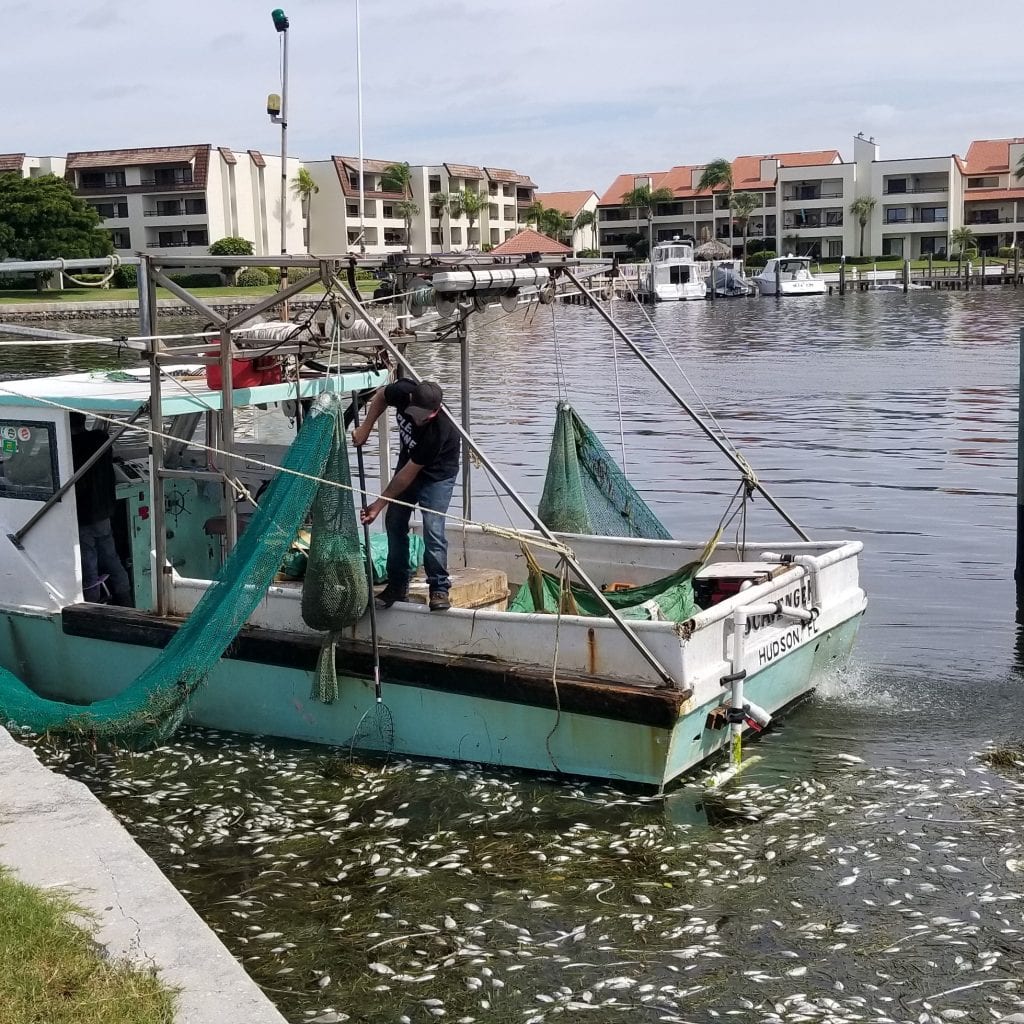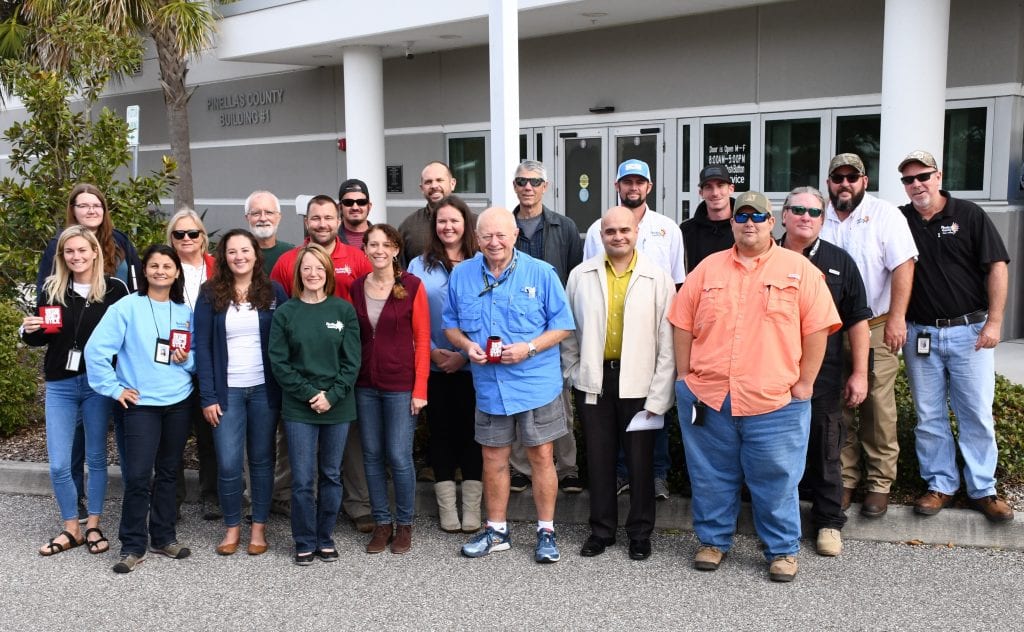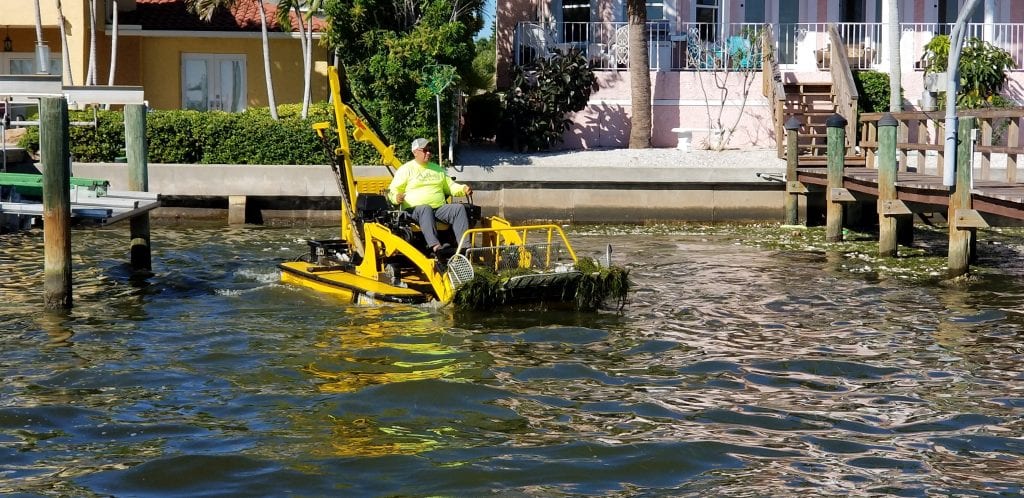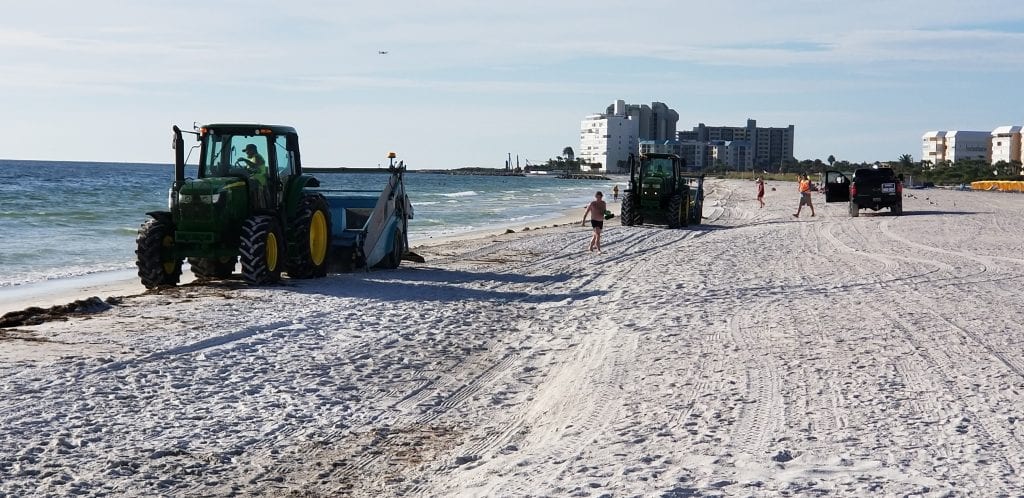






By Addie Javed, PE, Public Works Director, ajaved@pinellascounty.org and Tony Fabrizio, Public Information Specialist, Marketing & Communications, tfabrizio@pinellascounty.org
Address: 22211 US Highway 19N, Building 1. Clearwater, FL 33765
Red tide is a naturally occurring microscopic algae, Karenia Brevis (K.brevis) that has been documented along Florida’s Gulf Coast since the 1840’s. It produces brevetoxins that affect the central nervous system of fish and other vertebrates, causing these animals to die. Humans, marine mammals and sea turtles can also be affected by this organism. During the many months Red Tide sat off the Southwest Florida coast, Pinellas County did not sit back and ponder whether the bloom would travel north. The Public Works Department prepared as though the fish-killing algae would have to be dealt with.
After Florida Governor declared a State of Emergency for Pinellas and the surrounding counties, Public Works was given the go ahead to start putting together a plan to deal with the impending impacts of massive fish kills upon our beaches and waterways. “Initial efforts were to contact our beach cities to coordinate operational activities, and who were their points of contact. There was also coordination with Purchasing and the County Attorney’s Office,” recalled Public Works Environmental Management Division Director Kelli Levy.
Red Tide arrived off Pinellas County’s coast in early September, but with a plan in place, Pinellas County was able to initiate proactive cleanup by taking advantage of $1.3 million in emergency grant funding made available by the Florida Governor through the Florida Department of Environmental Protection (FDEP). Eventually, state funding would grow to $7.5 million, helping the County successfully mitigate the worst bloom in a decade by removing and disposing of more than 1,862 net tons of marine debris from offshore and inshore waters and the beaches.
During the three-month crisis, none of the County’s beaches or beach parks closed. Major coastal events were held as scheduled. Residents and visitors enjoyed mostly clean, white beaches, even though the bloom at times tinged the county’s turquoise waters and fouled the sea breezes.
It was a much different situation in Pinellas County in 2005, when a Red Tide bloom was so catastrophic it created a “dead zone” for marine life from Pasco County south to Sarasota County.
Bill Queen, mayor of tiny North Redington Beach in the mid-county, agrees. “I’ve been out here a long time,” he said. “I’ve gone through a lot of Red Tide outbreaks. This is the worst one we’ve ever had, and this is the best response the County has ever made in helping the beaches out here.”
Although the Public Works Environmental Management provided the operational leadership, several other county departments joined in on the response. Emergency Management established an Incident Action Plan and helped develop an incident command organizational structure. Parks and Conservation Resources provided daily inspections and support at the county’s three beach parks: Fred Howard, Sand Key, and Fort De Soto. Solid Waste oversaw the proper disposal of dead marine life. Marketing and Communications responded to media inquiries and distributed daily summaries to the media and the Pinellas Regional Public Information Network. Economic Development assisted affected coastal businesses in applying for emergency bridge loans through the Small Business Administration or Florida Emergency Bridge Loan Program.
And Visit St. Petersburg-Clearwater (VSPC), the county’s Convention and Visitors Bureau, countered adverse tourism impacts by establishing www.BeachesUpdate.com to help visitors find the best beaches on any given day. The bureau also shifted its marketing emphasis to arts, culture and other attractions beyond sand and water. Without clean beaches, though, VSPC’s job would have been vastly more difficult.
At the outset, the County triggered a cleanup contract with DRC Emergency Services, issued a Notice to Proceed and provided an equipment area for staging area near the midpoint of the Pinellas coast. DRC began harvesting as many dead fish as possible offshore, while quickly collecting those that made it to shore or into the inland waterways.
Thinking outside of the box during the planning stage allowed Pinellas County to react quickly and minimize impacts.
“One of the things we knew would be a challenge was getting someone on board to help us with this quickly,” said Assistant County Administrator Rahim Harji. “We used a different mechanism.” That is, the County looked at the contracts it already had in place for debris management caused by a major storm.
Cleanup was split into three key areas: offshore, beaches and inshore. “For the land based cleanup effort, we had hand crews that would collect any large fish in front of the rake operation,” said Sean Tipton, of Public Works Transportation Division who managed Red Tide field operations for Pinellas County.
In the waterways, harvesting vessels ranged from an 18-foot skiff john boat to get the shallows and around the docks, to inshore and offshore shrimp boats fitted with nets and outriggers to skim surface waters and collect dead fish. dragging and skimming the surface waters, collecting any of the dead fish.
Environmental staff collected more than 1,000 water samples from offshore and inshore monitoring locations to test for concentrations of Karenia brevis, the Red Tide organism. Results were compiled in a report published four to seven times a week to a dedicated Red Tide web page, www.PinellasCounty.org/redtide, as well as to the County’s Environmental News and regular Facebook pages.
Staff followed specific protocols for certain distressed or dead marine life. For dolphins and manatees, calls went out to Florida Fish and Wildlife Conservation Commission (FWC). For endangered or protected sea birds, either FWC or a nonprofit agency would respond. For sea turtles, FWC was called and the Clearwater Marine Aquarium received the animals.
The effort even included a cutting-edge breakthrough. Public Works Environmental Management collaborated with National Oceanic and Atmospheric Administration (NOAA) to develop an online tool that predicts respiratory irritation risk levels every three hours based on Red Tide concentration levels, satellite imagery, wind speed and wind direction. The “Experimental Red Tide Respiratory Tool” is the first tool of its kind in the country.
Staff quickly found a need to manage the high volume of calls from the public after the bloom arrived and worked with the GIS Enterprise team to develop an online reporting tool for fish kills. Citizens and municipalities were able to select the type of problem, add comments, provide contact information, attach pictures and provide a precise location by clicking on a map or entering address.
Another challenge was finding suitable locations to place dumpsters for the offloading of dead fish, and then keeping them as odor-free as possible.
“We’re so developed in the beach communities that there is not an optimal place to store the dumpsters where they aren’t going to affect anybody, other than at Sand Key Park and Fort De Soto Park,” said Emergency Coordinator Sean Hannigan of Public Works Customer and Technical Service Division.
Pinellas County officials credit much of the success to the relationships with municipal partners, as well as state and partner agencies. Public Works Director Addie Javed credits the combination of partnerships, collaboration with citizens and preparation.
“Our biggest success, we believe, is the partnerships,” Addie Javed said. “This is what we do. When the community needs us, we step up. We work together. Not just as Pinellas County, but all the municipalities. The public, NOAA, the state…. this is what local government does, and it’s been an honor and a privilege to be part of this.”
Pinellas County Public Works Department was recognized in March of 2019 by American Public Works Association (APWA) WestCoast Chapter for their successful partnerships with multiple agencies, and proactive Red Tide Abatement and Cleanup effort.
#TEAMREDTIDE





